| View previous topic :: View next topic |
| Author |
Message |
alex ph

Joined: 16 Mar 2013
Posts: 1662
|
 Posted: Tue Dec 08, 2020 11:38 pm Post subject: A curious Koike Auto Eye Hexanon KS 1.4/25 Posted: Tue Dec 08, 2020 11:38 pm Post subject: A curious Koike Auto Eye Hexanon KS 1.4/25 |
 |
|
alex ph wrote:
Fellows, I've got a curious lens that raises a couple of questions.
It's named Koike Auto Eye Hexanon KS. Which is already intriguing. Have you heard of Koike Hexanon? I first thought Koike is some animal in Japanese, and the name deals with its eye. Visibly not, it's just a proper name, nothing more. I wonder what Hexanon has to do with its beauty ring and if Konica contributed in some way. But those are not my main questions.
First of all, here is a cropped but otherwise unprocessed out-of-camera jpg from a Sony Nex, which shows the lens' excellent sharpness, good colour saturation and nice bokeh.
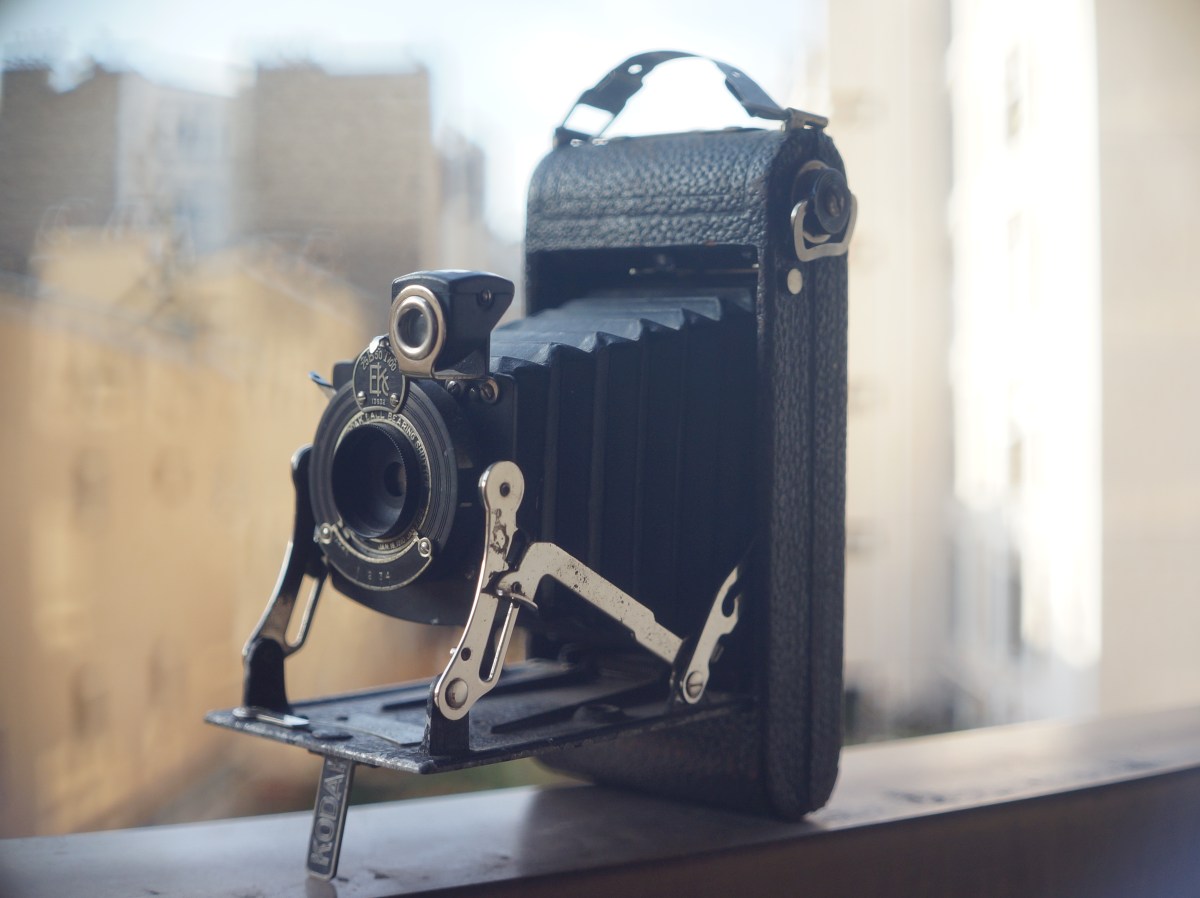
And here like the lens looks like, from the seller's listing:

So it has a pretty ordinary CCTV look (not at the cheapest side, though), with some possible manual control. It revealed to be the case: you can focus it manually, but the aperture must be managed via a small cable. Otherwise it stays closed, not at its min value, but maybe at f8. The cable has three tales. I tried using a 4.5V battery to see if putting the tales in different combinations to the battery's contacts changes anything, by a pure chance. No effect.
Question 1. So, my first question is: from your experience or reading, what is the electical scheme to manage the aperture through these wires? Is there an industrial standard or smth of the kind? Could you propose some useful links in regard to this issue?
Question 2. On the lens' side you see a screw. It is in fact a kind of lid screw. When I unscrewed it, behind there was another one that seemd to be able to change something in the inner mecanics. My hope was that it overrides the aperture manually. But when I turned it (it has no limiter, just turns freely), nothing changed. Do you know what for does it serve in such CCTV lenses?
The next point concerning the lens' design: from many respects the lens seems to be a pretty standard one. But if you look in it through to a well lit surface, you'll discover a curious "eye" just in the middle of the lens. 

I said to myself that should give some special effects. Wrong again. The lens renders a perfectly normal image, as you may testimony. That may affect bokeh or may give some other improvement, like polarizing filters do. Why there, in the center? A mystery. I imagine it may have something to do with its bokeh (as it looks doubled in the first shot), more than with its central sharpness. But it's a pure speculation from my part.
Question 3. If you have some guess about the destination of this "eye" based on your previous experience, your input will be appreciated.
The seller said the lens has C-mount. When I tried to put it on mine for NEX, that did not work. But just because the adapter has this down-step which is narrower than the lens' base. While it fits perfectly from the other side: so, useless for an adaptation. But not a big deal, because the lens' flange distance is shorter than the one of Sony E-mount. So, freelensing is the only option.
As the lens' base is wider than the E-mount, I just pressed it to the camera. That gives a max distance of around 20cm. The image is cropped on Sony APS-C, but pretty useful and of a nice character. Here are some quick samples:
#1 The shot above uncropped, always with the lens' half-closed aperture
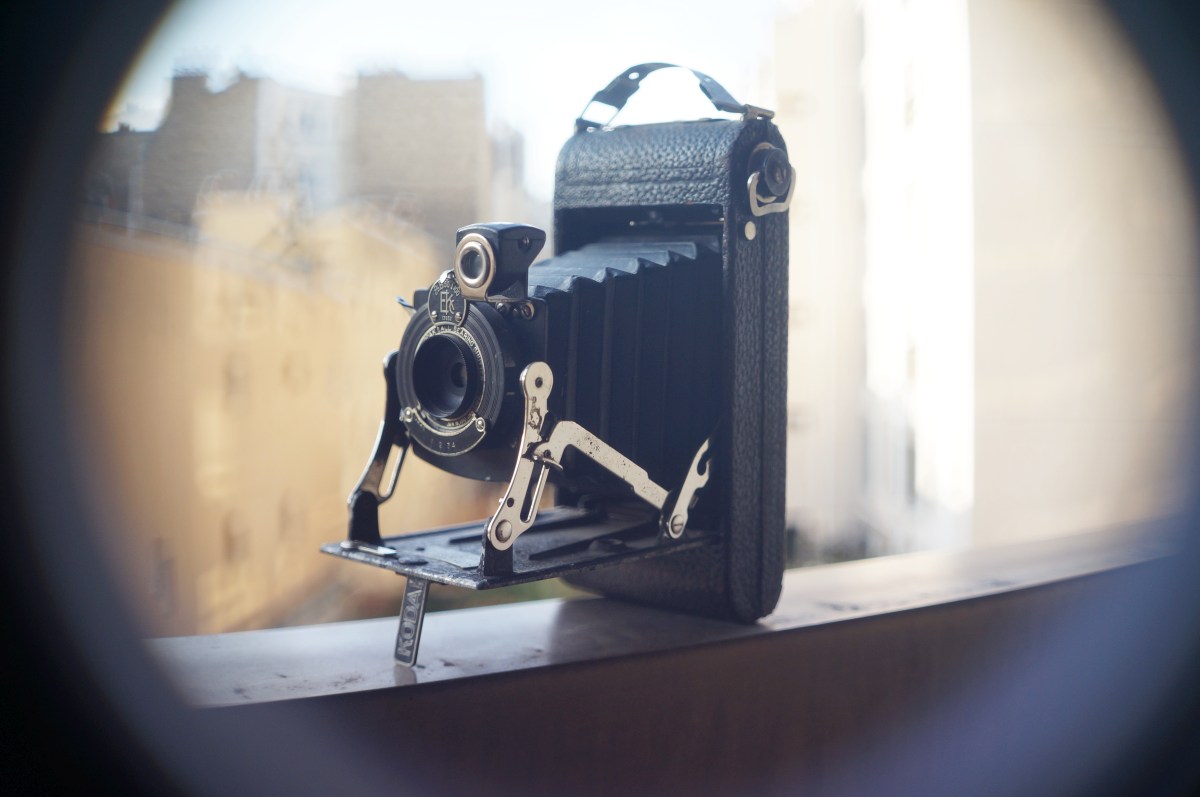
#2 Some bokeh test. In spite of the closed aperture, the objects fall into OOF quite quickly and rather nicely

#3 Some conter-light test: the lens does not seem to be very much prone to stray light flare. But it has pincushion

From what you see, the lens seems to be a good performer. I'd be really curious to make its diaphragm operate. If with the half-closed hole the OOF rendering is already nice, I'd expect something pretty special with it WO. Your help will be really appreciated.
By the way, the lens seems to be once imported to France. Beside the copy I got I found another one in the French ebay in sold listings, and one more listing is active at this moment. So, it must not be that rare. But I found zero trace about it in the internet, while some info about its maker, the camera it was used for, etc. might give some additional hints.
So, fellows, your expertise and intution is the only power that one may really count on. |
|
| Back to top |
|
 |
benadamx

Joined: 25 Feb 2019
Posts: 329
|
 Posted: Wed Dec 09, 2020 7:13 am Post subject: Posted: Wed Dec 09, 2020 7:13 am Post subject: |
 |
|
benadamx wrote:
well, found some puzzling evidence
#1
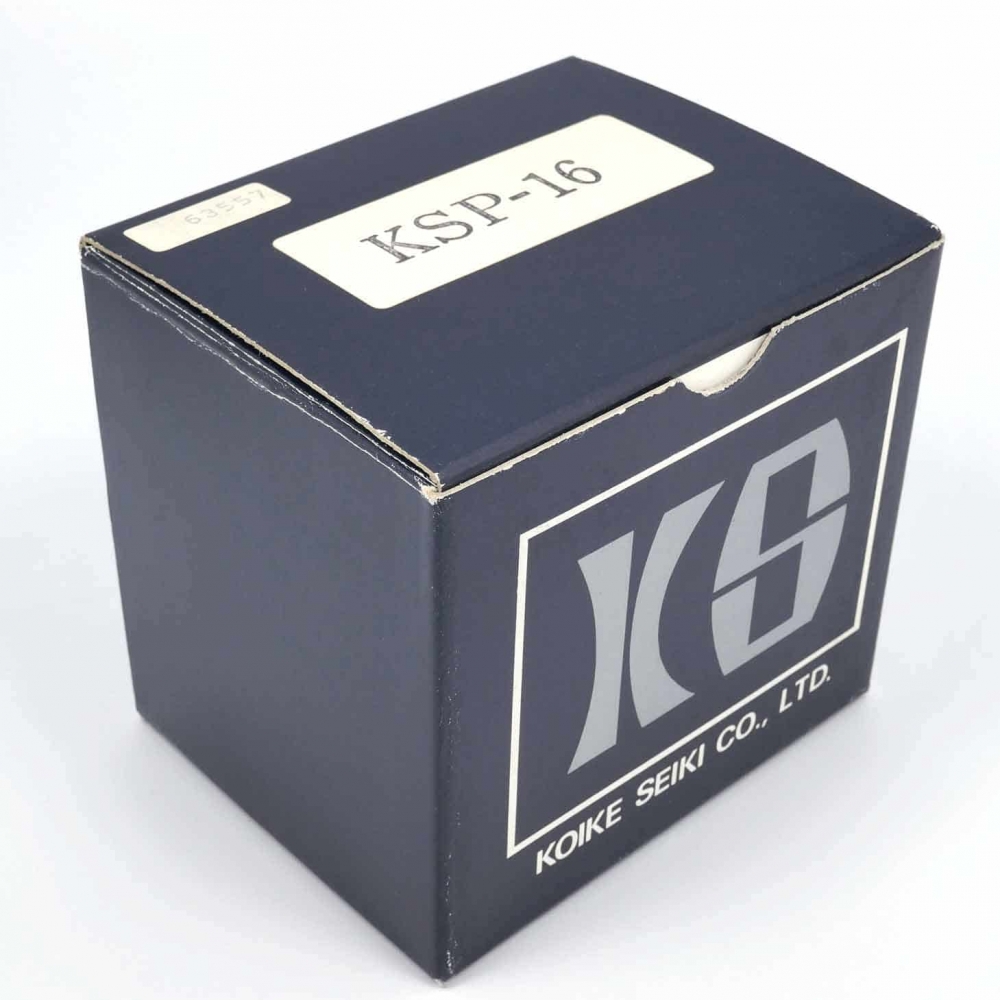
#2

does that match your wire leads?
unclear if same kokei seiki as this one https://camerapedia.fandom.com/wiki/Koike |
|
| Back to top |
|
 |
alex ph

Joined: 16 Mar 2013
Posts: 1662
|
 Posted: Wed Dec 09, 2020 10:29 pm Post subject: Posted: Wed Dec 09, 2020 10:29 pm Post subject: |
 |
|
alex ph wrote:
Thank you really much, Benadamx, what a catch! I only managed to find a patent by Koike for automatic control of diaphragm and a box on ebay USA full of lenses. Yours explain some things.
The scheme looks pretty much like the lens I have, with a difference in the number of tales the wire has. Mine has three. But as far as I understand the paper, the black and shield are both going to the ground.
I am not strong in electrical matters and I don't crearly understand what I should do with the voltage. The paper says to give from 4V to 16V. That is pretty much as a fork. I tried a 4.5V battery that did not work. Should I just find a stronger capacitor, giving from 8V?
There is also something about the screw which controls a variable resistor, but I cannot read well. Do you have an idea what should be done? |
|
| Back to top |
|
 |
visualopsins


Joined: 05 Mar 2009
Posts: 10956
Location: California
Expire: 2025-04-11
|
 Posted: Wed Dec 09, 2020 11:02 pm Post subject: Posted: Wed Dec 09, 2020 11:02 pm Post subject: |
 |
|
visualopsins wrote:
That CCTV era uses 12V...
what color wires on your unit?
If 12V on red/black +/- respectively, doesn't operate the diaphragm, three wires could be for rheostat, even digital...
_________________
☮☮☮☮☮☮☮☮☮☮☮☮☮☮☮☮☮☮☮☮☮☮☮☮☮☮☮☮☮☮☮☮ like attracts like! ☮☮☮☮☮☮☮☮☮☮☮☮☮☮☮☮☮☮☮☮☮☮☮☮☮☮☮☮☮☮☮☮
Cameras: Sony ILCE-7RM2, Spotmatics II, F, and ESII, Nikon P4
Lenses:
M42 Asahi Optical Co., Takumar 1:4 f=35mm, 1:2 f=58mm (Sonnar), 1:2.4 f=58mm (Heliar), 1:2.2 f=55mm (Gaussian), 1:2.8 f=105mm (Model I), 1:2.8/105 (Model II), 1:5.6/200, Tele-Takumar 1:5.6/200, 1:6.3/300, Macro-Takumar 1:4/50, Auto-Takumar 1:2.3 f=35, 1:1.8 f=55mm, 1:2.2 f=55mm, Super-TAKUMAR 1:3.5/28 (fat), 1:2/35 (Fat), 1:1.4/50 (8-element), Super-Multi-Coated Fisheye-TAKUMAR 1:4/17, Super-Multi-Coated TAKUMAR 1:4.5/20, 1:3.5/24, 1:3.5/28, 1:2/35, 1:3.5/35, 1:1.8/85, 1:1.9/85 1:2.8/105, 1:3.5/135, 1:2.5/135 (II), 1:4/150, 1:4/200, 1:4/300, 1:4.5/500, Super-Multi-Coated Macro-TAKUMAR 1:4/50, 1:4/100, Super-Multi-Coated Bellows-TAKUMAR 1:4/100, SMC TAKUMAR 1:1.4/50, 1:1.8/55
M42 Carl Zeiss Jena Flektogon 2.4/35
Contax Carl Zeiss Vario-Sonnar T* 28-70mm F3.5-4.5
Pentax K-mount SMC PENTAX-A ZOOM 1:3.5 35~105mm, SMC PENTAX ZOOM 1:4 45~125mm
Nikon Micro-NIKKOR-P-C Auto 1:3.5 f=55mm, NIKKOR-P Auto 105mm f/2.5 Pre-AI (Sonnar), Micro-NIKKOR 105mm 1:4 AI, NIKKOR AI-S 35-135mm f/3,5-4,5
Tamron SP 17mm f/3.5 (51B), Tamron SP 17mm f/3.5 (151B), SP 500mm f/8 (55BB), SP 70-210mm f/3.5 (19AH)
Vivitar 100mm 1:2.8 MC 1:1 Macro Telephoto (Kiron)
|
|
| Back to top |
|
 |
alex ph

Joined: 16 Mar 2013
Posts: 1662
|
 Posted: Wed Dec 09, 2020 11:53 pm Post subject: Posted: Wed Dec 09, 2020 11:53 pm Post subject: |
 |
|
alex ph wrote:
Thank you for the explanation, Visualopsins! That's getting clearer.
My lens' cable has red, white and black wires. I am thinking over where to get a compact source of 12V.
Do I understand right that if the voltage is OK, and the scheme does not need a rheostat, the lens' internal mecanism should adjust the iris without any feedback from the camera coming through the third wire? |
|
| Back to top |
|
 |
visualopsins


Joined: 05 Mar 2009
Posts: 10956
Location: California
Expire: 2025-04-11
|
 Posted: Thu Dec 10, 2020 12:56 am Post subject: Posted: Thu Dec 10, 2020 12:56 am Post subject: |
 |
|
visualopsins wrote:
12V:
+ red
- black
Also connect 20k-ohm potentiometer (probably linear taper):
low tap black wire
center tap white wire.
high tap red wire
Turning the pot adjusts voltage on white wire. Without pot, connecting both white and red to +, black to -, should open diaphragm. |
|
| Back to top |
|
 |
alex ph

Joined: 16 Mar 2013
Posts: 1662
|
 Posted: Fri Dec 11, 2020 12:24 am Post subject: Posted: Fri Dec 11, 2020 12:24 am Post subject: |
 |
|
alex ph wrote:
Thank you again, visualopsins!
Searching for a source of 12V electricity I found this kind of temporary and cheap solution. It sticks me to the wall outlet, but may work well just to check if opens the iris. What do you think?
I am discovering different current intensities associated with 12V - 1A, 2A, 3A. In your opinion, which one may fit without damaging the lens?
By the way, an ebay seller told me Koike Auto Eye lenses were (and maybe still are?) used in French urban surveillance system. |
|
| Back to top |
|
 |
benadamx

Joined: 25 Feb 2019
Posts: 329
|
 Posted: Fri Dec 11, 2020 2:44 am Post subject: Posted: Fri Dec 11, 2020 2:44 am Post subject: |
 |
|
benadamx wrote:
| alex ph wrote: |
| By the way, an ebay seller told me Koike Auto Eye lenses were (and maybe still are?) used in French urban surveillance system. |
i think i found that datasheet on a french auction site... |
|
| Back to top |
|
 |
visualopsins


Joined: 05 Mar 2009
Posts: 10956
Location: California
Expire: 2025-04-11
|
 Posted: Sat Dec 12, 2020 12:01 am Post subject: Posted: Sat Dec 12, 2020 12:01 am Post subject: |
 |
|
visualopsins wrote:
| alex ph wrote: |
Thank you again, visualopsins!
Searching for a source of 12V electricity I found this kind of temporary and cheap solution. It sticks me to the wall outlet, but may work well just to check if opens the iris. What do you think?
I am discovering different current intensities associated with 12V - 1A, 2A, 3A. In your opinion, which one may fit without damaging the lens?
By the way, an ebay seller told me Koike Auto Eye lenses were (and maybe still are?) used in French urban surveillance system. |
 you could wire a half-dozen 2V 1000Ah submarine battery cells in series to get 12V -- a single one of those cells would vaporize a spanner wrench dropped across the terminals. you could wire a half-dozen 2V 1000Ah submarine battery cells in series to get 12V -- a single one of those cells would vaporize a spanner wrench dropped across the terminals.
However, in this case a 1A 12V wall wart should be plenty of power. You might even be able to use a 9V battery, such as used in old transistor radios...or two 6V cells same as use in Pentax 6x7 cameras, in series.
_________________
☮☮☮☮☮☮☮☮☮☮☮☮☮☮☮☮☮☮☮☮☮☮☮☮☮☮☮☮☮☮☮☮ like attracts like! ☮☮☮☮☮☮☮☮☮☮☮☮☮☮☮☮☮☮☮☮☮☮☮☮☮☮☮☮☮☮☮☮
Cameras: Sony ILCE-7RM2, Spotmatics II, F, and ESII, Nikon P4
Lenses:
M42 Asahi Optical Co., Takumar 1:4 f=35mm, 1:2 f=58mm (Sonnar), 1:2.4 f=58mm (Heliar), 1:2.2 f=55mm (Gaussian), 1:2.8 f=105mm (Model I), 1:2.8/105 (Model II), 1:5.6/200, Tele-Takumar 1:5.6/200, 1:6.3/300, Macro-Takumar 1:4/50, Auto-Takumar 1:2.3 f=35, 1:1.8 f=55mm, 1:2.2 f=55mm, Super-TAKUMAR 1:3.5/28 (fat), 1:2/35 (Fat), 1:1.4/50 (8-element), Super-Multi-Coated Fisheye-TAKUMAR 1:4/17, Super-Multi-Coated TAKUMAR 1:4.5/20, 1:3.5/24, 1:3.5/28, 1:2/35, 1:3.5/35, 1:1.8/85, 1:1.9/85 1:2.8/105, 1:3.5/135, 1:2.5/135 (II), 1:4/150, 1:4/200, 1:4/300, 1:4.5/500, Super-Multi-Coated Macro-TAKUMAR 1:4/50, 1:4/100, Super-Multi-Coated Bellows-TAKUMAR 1:4/100, SMC TAKUMAR 1:1.4/50, 1:1.8/55
M42 Carl Zeiss Jena Flektogon 2.4/35
Contax Carl Zeiss Vario-Sonnar T* 28-70mm F3.5-4.5
Pentax K-mount SMC PENTAX-A ZOOM 1:3.5 35~105mm, SMC PENTAX ZOOM 1:4 45~125mm
Nikon Micro-NIKKOR-P-C Auto 1:3.5 f=55mm, NIKKOR-P Auto 105mm f/2.5 Pre-AI (Sonnar), Micro-NIKKOR 105mm 1:4 AI, NIKKOR AI-S 35-135mm f/3,5-4,5
Tamron SP 17mm f/3.5 (51B), Tamron SP 17mm f/3.5 (151B), SP 500mm f/8 (55BB), SP 70-210mm f/3.5 (19AH)
Vivitar 100mm 1:2.8 MC 1:1 Macro Telephoto (Kiron)
|
|
| Back to top |
|
 |
kymarto


Joined: 30 Nov 2016
Posts: 406
Location: Portland, OR and Milan, Italy
|
 Posted: Sat Dec 12, 2020 12:19 pm Post subject: Posted: Sat Dec 12, 2020 12:19 pm Post subject: |
 |
|
kymarto wrote:
I think you are going to have quite a time controlling the iris, as you will definitely have to have some sort of potentiometer in series there. I may be wrong but I guess that the voltage controls the opening of the iris. I'm guessing that the eye is some sort of circular ND filter, and may have to do with cutting down the amount of light striking the sensor without having to close the iris too much and get a lot of diffraction effects. Gonna be kind of a pain to carry around a 12 volt power supply with a potentiometer to shoot with it. And I'm guessing that when you get the iris open fully that eye will come into play and you will get some serious donut bokeh.
_________________
Vintage lens aficionado |
|
| Back to top |
|
 |
alex ph

Joined: 16 Mar 2013
Posts: 1662
|
 Posted: Sun Dec 13, 2020 3:28 pm Post subject: Posted: Sun Dec 13, 2020 3:28 pm Post subject: |
 |
|
alex ph wrote:
Thank you for your contribution, visualopsins and kymarto! I tried to raise the voltage using a 6V battery, with no effect. So, I ordered a small 12V instead of wall jack adapter. I'll try also with a potentiometer. Such a set up could be portable, I think.
But... I already managed to open the iris, and the way to do it may make you laughing. I discovered that if you simply shake the lens, as if it was a mercury thermometer and you need to set it down to 35, the iris blades move. It's chaotic, but after making 5 or 7 short shakes I arrived to let it fully open. I am glad to have arrived to that, though some smoother and more predictable control would still be a nice option.
The second thing, I discovered that by putting the lens' focusing ring to infinity and by pressing the lens really strong against the E-mount, I can reach infinity or almost.So, my first curiousity is satisfied. Here are some new results.
#1 With fully open iris, at a larger distance than the first one (partly cropped to rid off black corners). The bokeh is not quite donut, even though you may see something of the kind in the rear center
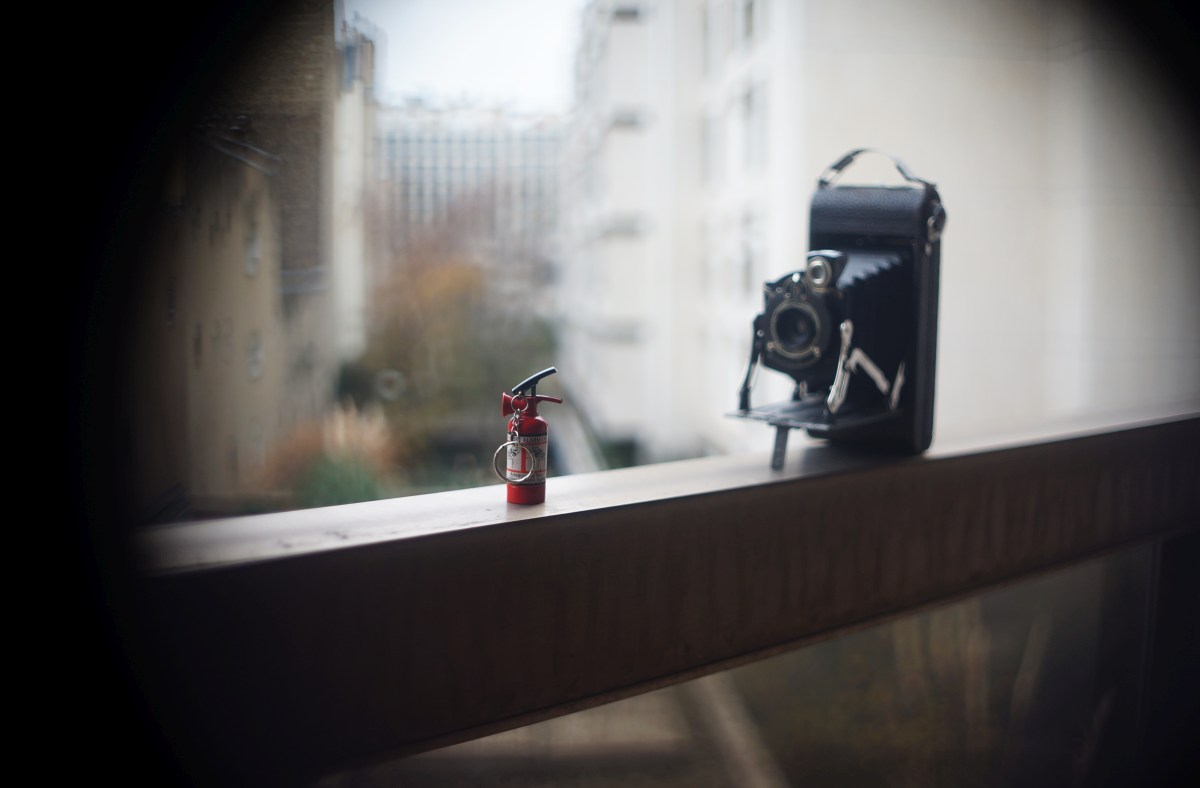
#2 But when you look at the top of the roofs you see a very clear double and triple shape effect that must be the essential result of the "eye" in the lens' center

#3 Here is a shot at around infinity

#3bis A 100% unprocessed crop from the previous. Not a champion of sharpness and contrast WO, while not bad either. The result might be improved, I think, with a proper adapter if it only could be possible instead of freelensing

The dull light contributed to less pronounced colours and shapes. I'm going to try later, when the sun shines again. |
|
| Back to top |
|
 |
kymarto


Joined: 30 Nov 2016
Posts: 406
Location: Portland, OR and Milan, Italy
|
 Posted: Sun Dec 13, 2020 10:32 pm Post subject: Posted: Sun Dec 13, 2020 10:32 pm Post subject: |
 |
|
kymarto wrote:
| alex ph wrote: |
Thank you for your contribution, visualopsins and kymarto! I tried to raise the voltage using a 6V battery, with no effect. So, I ordered a small 12V instead of wall jack adapter. I'll try also with a potentiometer. Such a set up could be portable, I think.
But... I already managed to open the iris, and the way to do it may make you laughing. I discovered that if you simply shake the lens, as if it was a mercury thermometer and you need to set it down to 35, the iris blades move. It's chaotic, but after making 5 or 7 short shakes I arrived to let it fully open. I am glad to have arrived to that, though some smoother and more predictable control would still be a nice option.
The dull light contributed to less pronounced colours and shapes. I'm going to try later, when the sun shines again. |
I think there is a good chance that if you can move the iris blades by shaking the lens, the whole control mechanism is probably kaput. In the paper that someone else posted, it states that the iris should be closed when the power is off. This might well be, if it was designed for an old tube type sensor, as a protective mechanism to protect the tube from burn in. You can see the donut bokeh as I predicted.
_________________
Vintage lens aficionado |
|
| Back to top |
|
 |
alex ph

Joined: 16 Mar 2013
Posts: 1662
|
 Posted: Sun Dec 13, 2020 11:19 pm Post subject: Posted: Sun Dec 13, 2020 11:19 pm Post subject: |
 |
|
alex ph wrote:
Well, worth checking if the iris is now completely uncontrollable electrically.
As for the bokeh, I hope to get clearer results in sunny weather once it arrives and with various backgrounds. |
|
| Back to top |
|
 |
alex ph

Joined: 16 Mar 2013
Posts: 1662
|
 Posted: Sun Mar 14, 2021 1:15 pm Post subject: Posted: Sun Mar 14, 2021 1:15 pm Post subject: |
 |
|
alex ph wrote:
I made some new shots, always on Sony Nex, the lens tightly pressed against the E-mount. This time I grasped some more complex background in order to study better the bokeh. Contrast is boosted in all shots.
#1 In general, the bokeh shows some transitions in between more conventional OOF-spots and donut O-rings. This shot is uncropped.

#2 The shot wide open or almost. O-rings appear in some rather unpredictable spots, not necessarily the brightest.
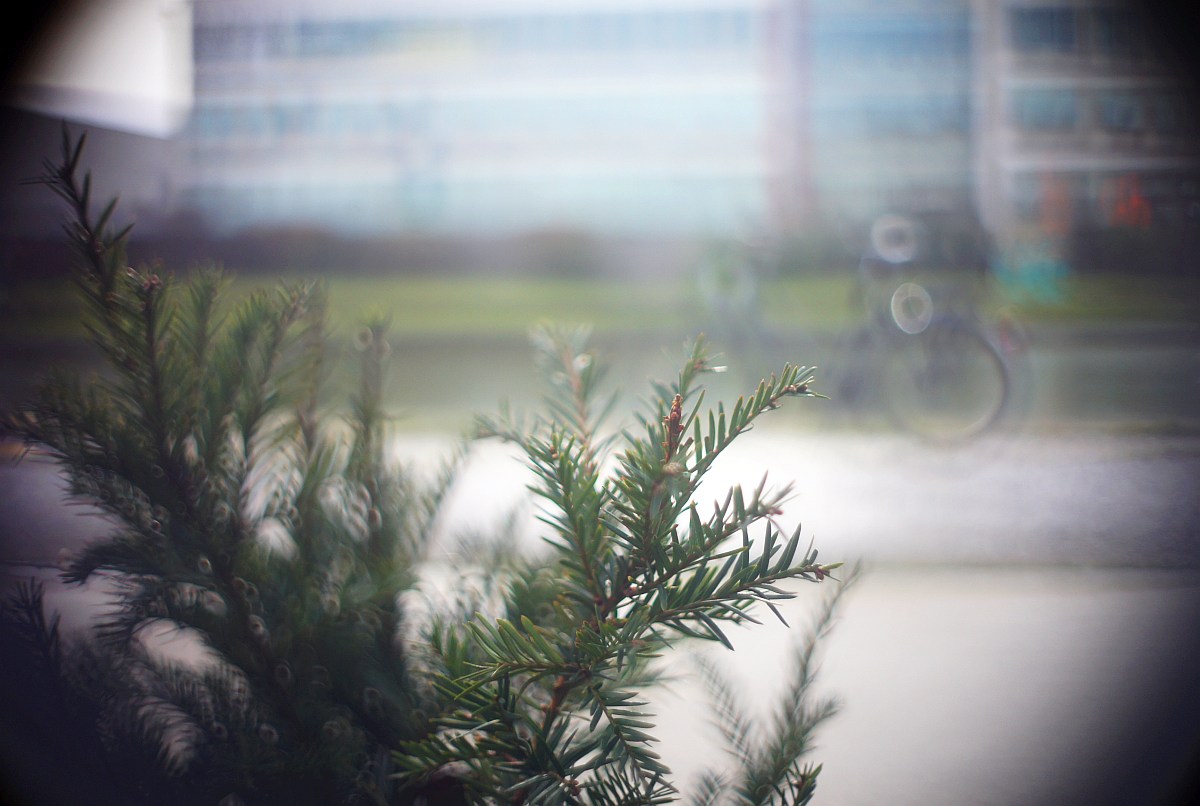
#3 The same scene with half-closed iris, kind of f5.6. Some more O-rings appear instead of disappearing! Note again the double shapes in OOF wone, namely of bike wheels and frame in both cases.
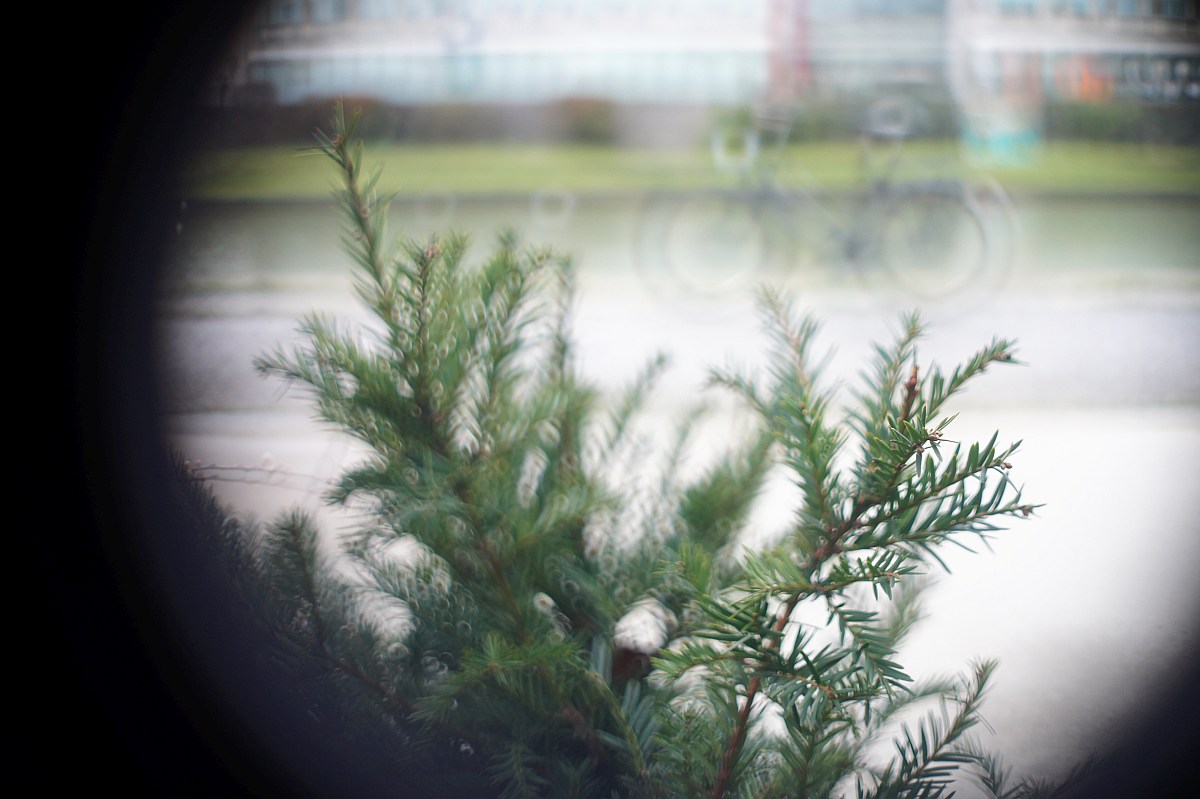
#4 The bokeh varies accoding to the light situation, distance and the background composition. This one at f5.6 looks rather smooth, because doubled shapes are small and fusion themselves down.

#5 And sometimes, at the same aperture it looks pretty much busier, especially because the small branches are distinctive and the OOF doubling makes them look multiplied. You may also wish to compare the scene to the one rendered by a "simple" Iscotar 2.8/50 lens.

#6 Here the bokeh gets close to neon-light effect.
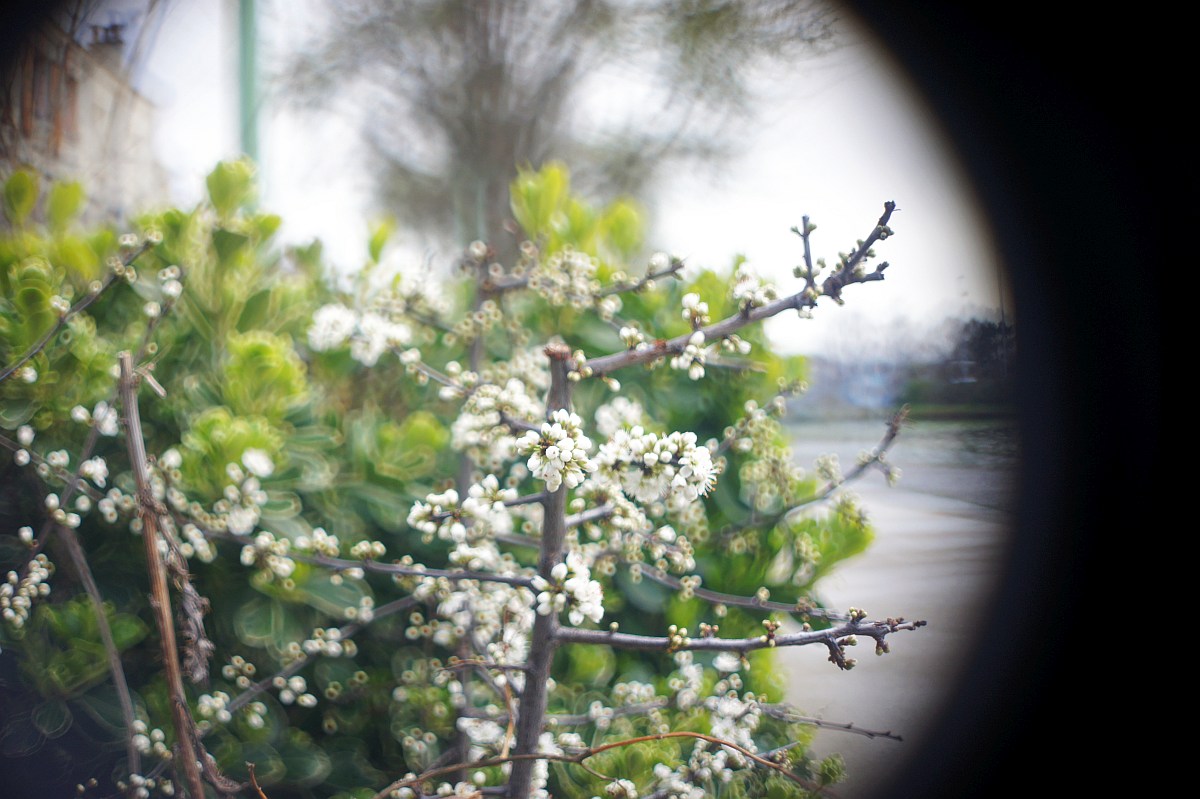
#7 One more shot, wide open, with clearly dubbled OOF shapes, without donuts. Note the human figure in the left part of the image. The mid-range OOF looks here much like double exposure. While infinity is just fuzzy.
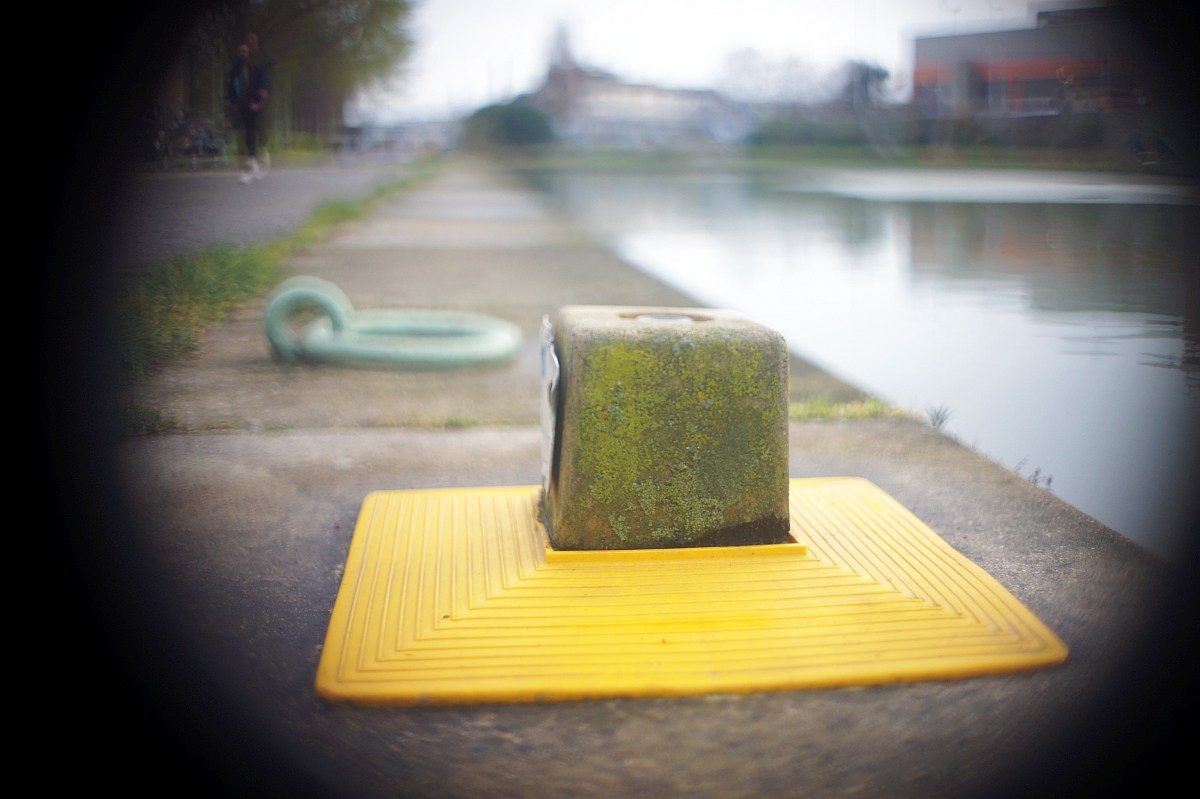
#8 Just a shot at infinity, at around f5.6
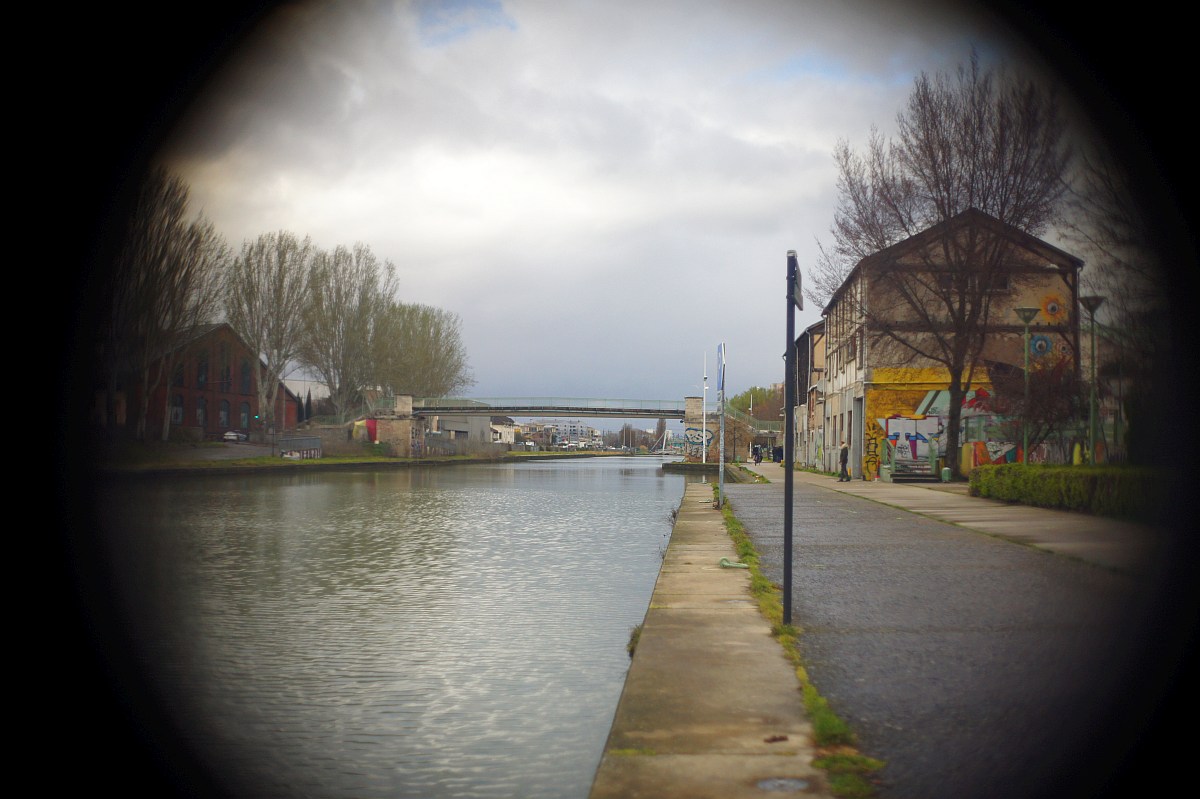
#9 An unprocessed 100% crop from the previous. Given it's a freelensed shot, and the light is not the brightest, I'd rate the len's capacity to resolve small details as pretty high.
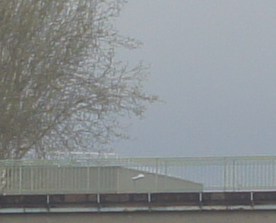 |
|
| Back to top |
|
 |
DontBlink79
Joined: 25 Apr 2021
Posts: 3
|
 Posted: Sun Apr 25, 2021 5:45 am Post subject: Posted: Sun Apr 25, 2021 5:45 am Post subject: |
 |
|
DontBlink79 wrote:
Hello!
This is my first post and I apologize upfront if I am breaking any "forum rules". I collect tube related equipment and recently purchased 10 large boxes of new old stock tubes. I did not have the chance to go through them them until a week ago and found that one of the boxes was all new old stock camera lenses. (Kodak Cine Ektar Camera Lens 50mm f/1.9 / Apollo / Cosmicar)
I've attached some photos of the lens you mentioned along with the diagram that was in the box.
I have no expertise in camera equipment so this is out of my wheelhouse. Would you be able to suggest a fair price to list this for?
Your thoughts and feedback are truly appreciated.
Kindest Regards,
William
#1

#2
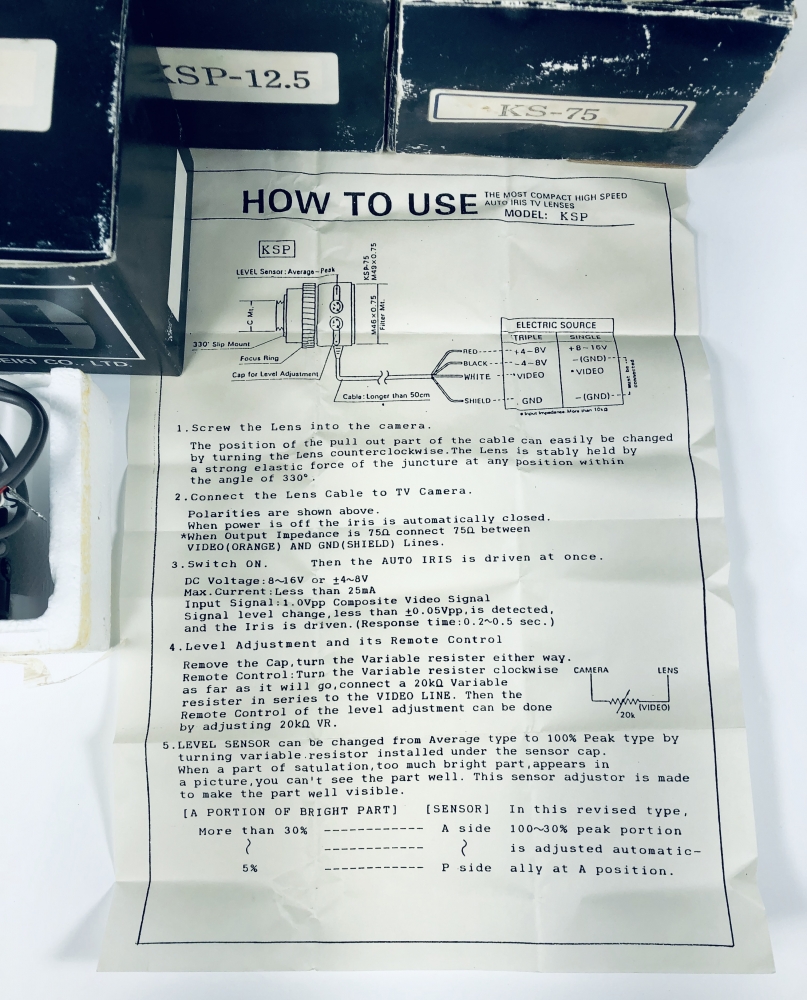
#3
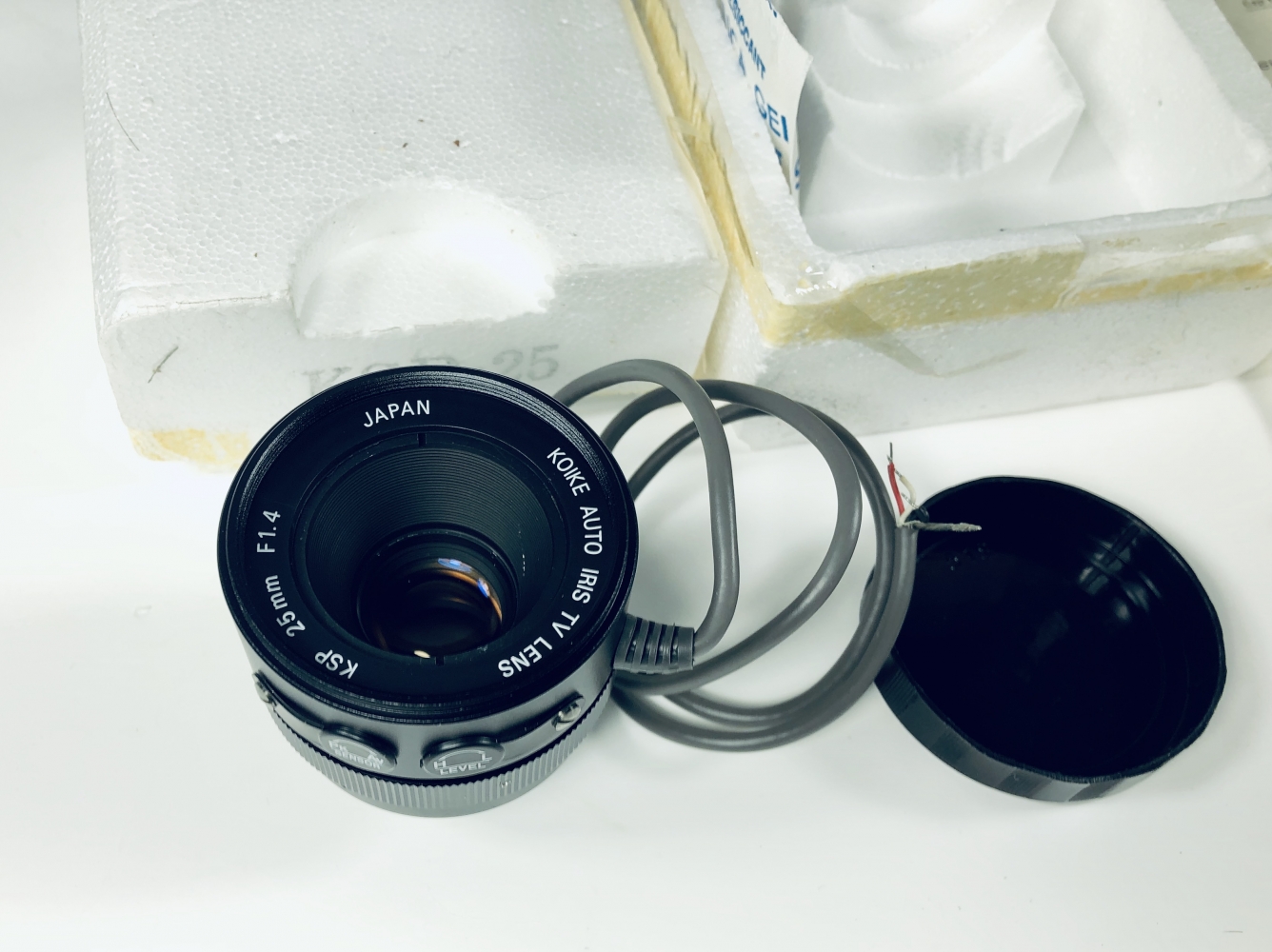 |
|
| Back to top |
|
 |
DontBlink79
Joined: 25 Apr 2021
Posts: 3
|
 Posted: Sun Apr 25, 2021 5:49 am Post subject: Pictures Posted: Sun Apr 25, 2021 5:49 am Post subject: Pictures |
 |
|
DontBlink79 wrote:
My apologies if these uploaded twice as the previous pictures were not showing on my end.
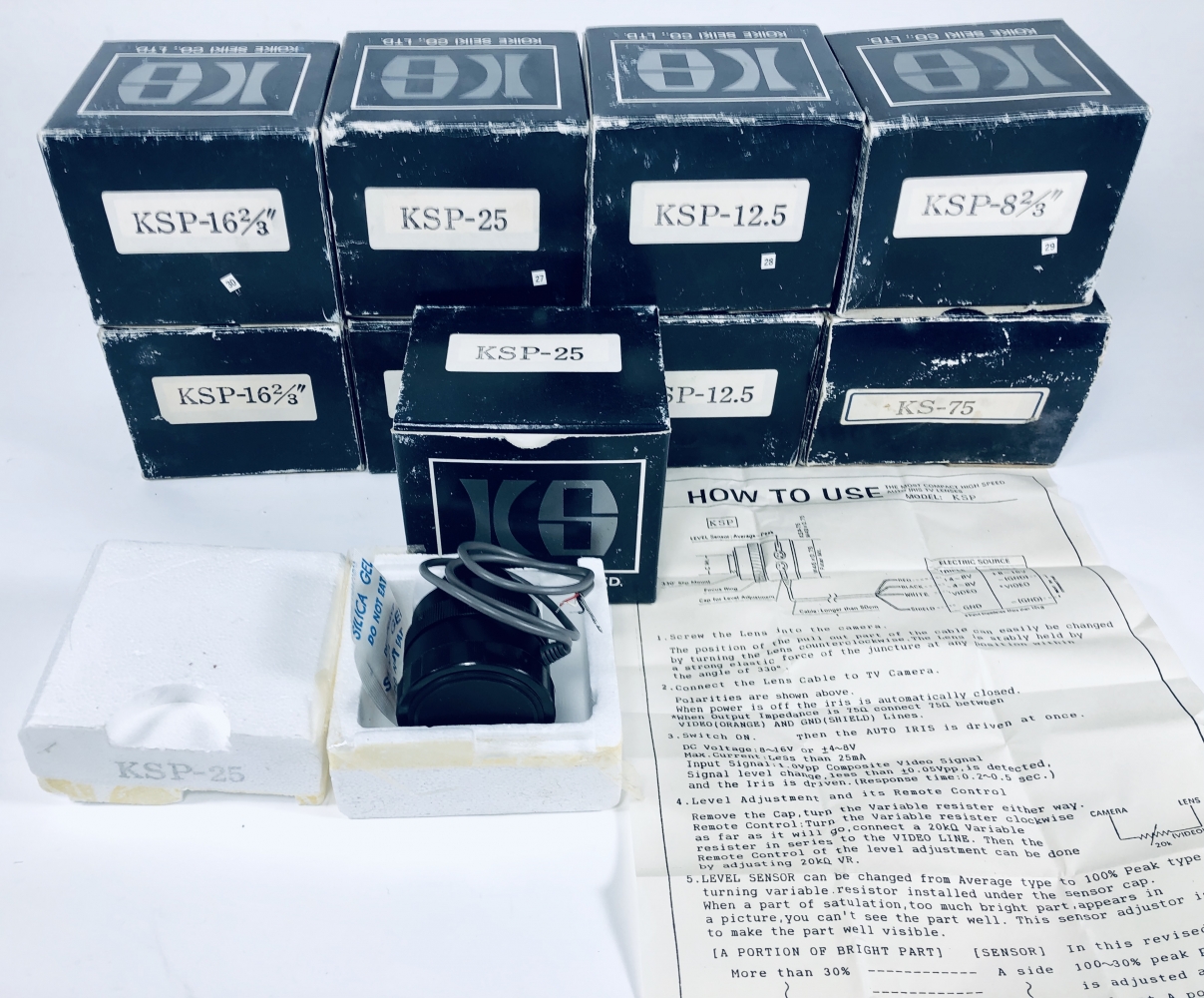
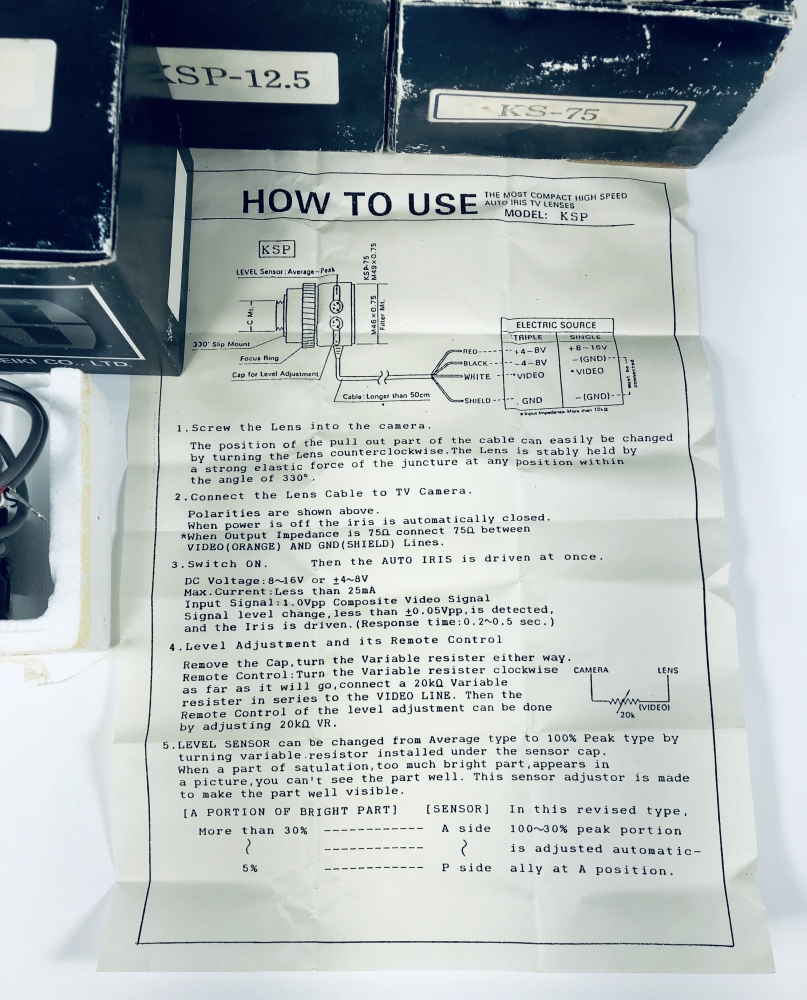
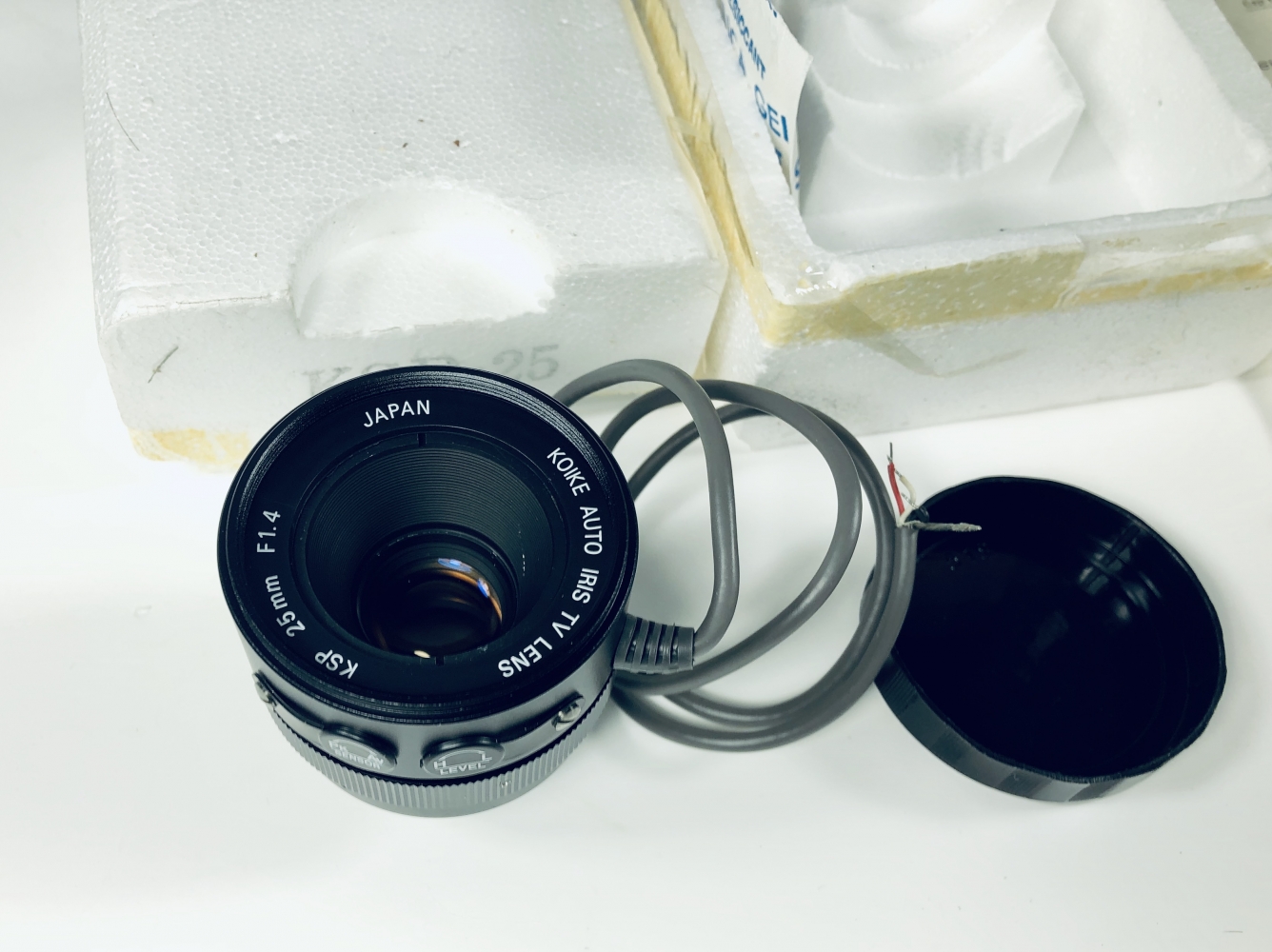 |
|
| Back to top |
|
 |
alex ph

Joined: 16 Mar 2013
Posts: 1662
|
 Posted: Sun Apr 25, 2021 10:36 am Post subject: Posted: Sun Apr 25, 2021 10:36 am Post subject: |
 |
|
alex ph wrote:
Welcome William and thank you for posting the full text of the instruction. That certainly improves the idea of how the iris is controlled. Even though you have got an updated version of the lens, with a modified electric scheme and without "Hexanon" in the name.
As for the price range, I'd say the difficulty of adaptation and the lack of manual iris control cuts the price off considerably. As I mentioned in the original post, I could only use the lens on Sony mirrorless (having a very short focal flange) manually pressing the lens against the mount. It is in no way a permanent solution and this certainly contributed to the lack of information about the lens' performance.
As an item of curiosity, I think it may come in the range of 10-20 quids (for what I got mine). Here you may see a bunch of the used copies traded for 45 BIN. I remember to have found this offer already in the time of original posting. So, there is no a great demand for the lens. |
|
| Back to top |
|
 |
DontBlink79
Joined: 25 Apr 2021
Posts: 3
|
 Posted: Sun May 02, 2021 3:50 pm Post subject: Posted: Sun May 02, 2021 3:50 pm Post subject: |
 |
|
DontBlink79 wrote:
Alex,
Thank you for the information and for your time. I truly appreciate it.
Best Regards,
William S. |
|
| Back to top |
|
 |
benadamx

Joined: 25 Feb 2019
Posts: 329
|
 Posted: Mon May 03, 2021 5:37 am Post subject: Posted: Mon May 03, 2021 5:37 am Post subject: |
 |
|
benadamx wrote:
| alex ph wrote: |
| As I mentioned in the original post, I could only use the lens on Sony mirrorless (having a very short focal flange) manually pressing the lens against the mount. |
that makes it sound more like a CS-mount than a C-mount, which is entirely possible (CS has the same threaded mount as C, but a much shorter flange focal distance, such that they need to mount so deep into the body cavity as to be generally unadaptable) |
|
| Back to top |
|
 |
alex ph

Joined: 16 Mar 2013
Posts: 1662
|
 Posted: Fri May 07, 2021 8:25 pm Post subject: Posted: Fri May 07, 2021 8:25 pm Post subject: |
 |
|
alex ph wrote:
| benadamx wrote: |
that makes it sound more like a CS-mount than a C-mount |
You might be right, I did not think about it earlier! Is there an easy way to check if this is the case or maybe the len's bottom is just too wide for a C-mount adapter? |
|
| Back to top |
|
 |
benadamx

Joined: 25 Feb 2019
Posts: 329
|
 Posted: Fri May 07, 2021 11:22 pm Post subject: Posted: Fri May 07, 2021 11:22 pm Post subject: |
 |
|
benadamx wrote:
| alex ph wrote: |
You might be right, I did not think about it earlier! Is there an easy way to check if this is the case or maybe the len's bottom is just too wide for a C-mount adapter? |
the mount is the same, so if it screws into a c-mount adapter and you can only focus at extremely close range (if at all), it's probably CS... if you mean that the backside of the lens itself is too wide to fit into the adapter, i've had that happen with c-mount lenses and was able to get them to mount by removing the back panel of the lens, which tends to be separate from the mounting flange |
|
| Back to top |
|
 |
alex ph

Joined: 16 Mar 2013
Posts: 1662
|
 Posted: Sat May 08, 2021 11:02 pm Post subject: Posted: Sat May 08, 2021 11:02 pm Post subject: |
 |
|
alex ph wrote:
Thank you. I'll see if the bottom part is removable. |
|
| Back to top |
|
 |
alex ph

Joined: 16 Mar 2013
Posts: 1662
|
 Posted: Sat May 15, 2021 10:37 am Post subject: Posted: Sat May 15, 2021 10:37 am Post subject: |
 |
|
alex ph wrote:
I checked the bottom which is removable, together with the mount thread. But it does not help much, for the construction of the lens.
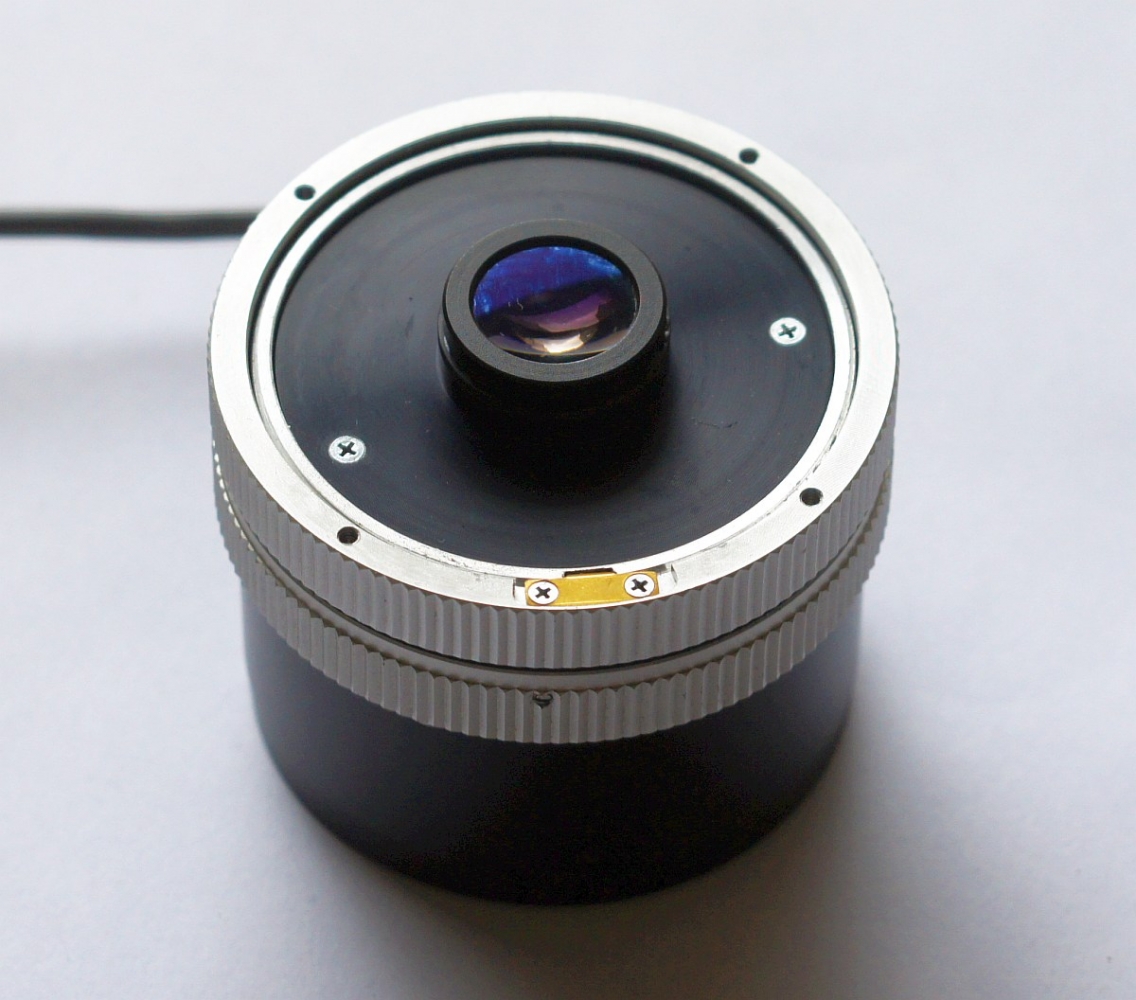
Just under the plate to which the rear lens group is attached, the diaphragm is hidden. I read some CCTV lenses are machined to fit adapters. This one is made in a way that I can hardly imagine a fruitful machining.
I checked again the lens at infinity, tightly pressed directly to Sony Nex mount. It reaches infinity almost perfectly. Which means this is a C-mount lens, as it has almost the same flange distance as Sony E-mount.
I regret there is no easy way to adapt the lens, as it has a really interesting rendering. |
|
| Back to top |
|
 |
alex ph

Joined: 16 Mar 2013
Posts: 1662
|
 Posted: Mon May 17, 2021 7:04 pm Post subject: Posted: Mon May 17, 2021 7:04 pm Post subject: |
 |
|
alex ph wrote:
Visualopsins I followed your advice on a 12V battery and it worked! Thank you.
When white wire together with black is pressed to the battery '-' while the red to '+' the diaphragm opens fully. The battery is very small, so it might be possible to attach it to the camera. Now the deal is to a proper potentiometer.
I am also thinking how to replace the bottom plate directly with an E-mount. Anyway I would need for a fine drill. |
|
| Back to top |
|
 |
visualopsins


Joined: 05 Mar 2009
Posts: 10956
Location: California
Expire: 2025-04-11
|
 Posted: Mon May 17, 2021 8:00 pm Post subject: Posted: Mon May 17, 2021 8:00 pm Post subject: |
 |
|
visualopsins wrote:
 
_________________
☮☮☮☮☮☮☮☮☮☮☮☮☮☮☮☮☮☮☮☮☮☮☮☮☮☮☮☮☮☮☮☮ like attracts like! ☮☮☮☮☮☮☮☮☮☮☮☮☮☮☮☮☮☮☮☮☮☮☮☮☮☮☮☮☮☮☮☮
Cameras: Sony ILCE-7RM2, Spotmatics II, F, and ESII, Nikon P4
Lenses:
M42 Asahi Optical Co., Takumar 1:4 f=35mm, 1:2 f=58mm (Sonnar), 1:2.4 f=58mm (Heliar), 1:2.2 f=55mm (Gaussian), 1:2.8 f=105mm (Model I), 1:2.8/105 (Model II), 1:5.6/200, Tele-Takumar 1:5.6/200, 1:6.3/300, Macro-Takumar 1:4/50, Auto-Takumar 1:2.3 f=35, 1:1.8 f=55mm, 1:2.2 f=55mm, Super-TAKUMAR 1:3.5/28 (fat), 1:2/35 (Fat), 1:1.4/50 (8-element), Super-Multi-Coated Fisheye-TAKUMAR 1:4/17, Super-Multi-Coated TAKUMAR 1:4.5/20, 1:3.5/24, 1:3.5/28, 1:2/35, 1:3.5/35, 1:1.8/85, 1:1.9/85 1:2.8/105, 1:3.5/135, 1:2.5/135 (II), 1:4/150, 1:4/200, 1:4/300, 1:4.5/500, Super-Multi-Coated Macro-TAKUMAR 1:4/50, 1:4/100, Super-Multi-Coated Bellows-TAKUMAR 1:4/100, SMC TAKUMAR 1:1.4/50, 1:1.8/55
M42 Carl Zeiss Jena Flektogon 2.4/35
Contax Carl Zeiss Vario-Sonnar T* 28-70mm F3.5-4.5
Pentax K-mount SMC PENTAX-A ZOOM 1:3.5 35~105mm, SMC PENTAX ZOOM 1:4 45~125mm
Nikon Micro-NIKKOR-P-C Auto 1:3.5 f=55mm, NIKKOR-P Auto 105mm f/2.5 Pre-AI (Sonnar), Micro-NIKKOR 105mm 1:4 AI, NIKKOR AI-S 35-135mm f/3,5-4,5
Tamron SP 17mm f/3.5 (51B), Tamron SP 17mm f/3.5 (151B), SP 500mm f/8 (55BB), SP 70-210mm f/3.5 (19AH)
Vivitar 100mm 1:2.8 MC 1:1 Macro Telephoto (Kiron)
|
|
| Back to top |
|
 |
|
|
